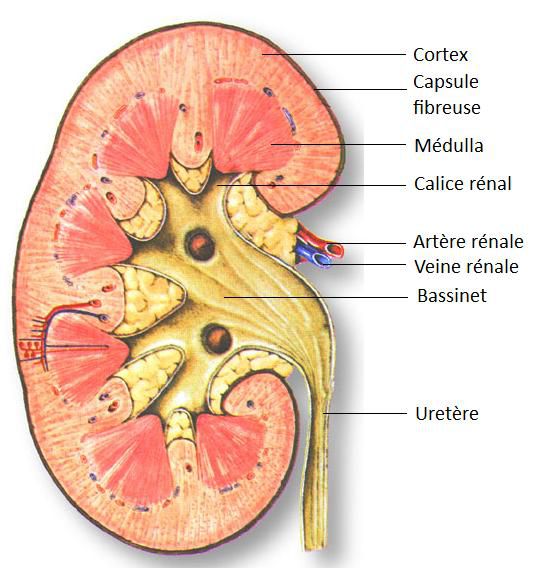-
 Heliography
Heliography
-
 Ohm's law
Ohm's law
-
 Scaly
Scaly
-
 Videotelephony
Videotelephony
-
 Nanoparticle
Nanoparticle
-
 Rheology
Rheology
-
 Gliding.
Gliding.
-
 Fibroblasts
Fibroblasts
-
 True celestial equator
True celestial equator
-
 Migration
Migration
-
 Cape Canaveral
Cape Canaveral
-
 Basal cell carcinoma
Basal cell carcinoma
-
 Songbird
Songbird
-
 Mica
Mica
-
 Hypoxia
Hypoxia
-
 Silkworm
Silkworm
-
 pH
pH
-
 Yarkovsky effect
Yarkovsky effect
-
 De facto standard
De facto standard
-
 Materialisation
Materialisation
-
 International Astronomical Union
International Astronomical Union
-
 SIM
SIM
-
 M15
M15
-
 PCT
PCT
-
 Fine particle
Fine particle
-
 Tunnel effect
Tunnel effect
-
 Enthalpy
Enthalpy
-
 VLPO nucleus
VLPO nucleus
-
 Craton
Craton
-
 Oblique illumination microscope
Oblique illumination microscope
Kidney
The kidney belongs to the urinary system.
Function of the kidney
The kidney is involved in several processes although its main function is to detoxify the body by removing waste in urine. It filters blood plasma and is responsible for homeostasis (the balance of water and ions) in the body. Diuresis or urine output (urine formation) is 1.5 litres daily.
The kidneys have glands in the upper part of the organ called the adrenal glands that have an endocrine function: they secrete hormones (erythropoietin, corticosteroids, adrenaline). The kidneys also control blood pressure
The two kidneys are essential organs although it is possible to live with only one.
Structure of the kidney
There are two kidneys, located in the abdomen. They are ovoid in shape with a convex external surface. Their average size is 2 centimetres long, 6 cm wide and 3 centimetres thick. The renal artery branches and divides further within the kidney itself in the cavity in the internal part of the kidney known as the renal sinus.
The kidneys are surrounded by a very hard protective membrane. Internally, the kidney is formed from a cortex on the periphery and a central part, the medulla. The cortex passes into the medulla extending to the sinus.
The basic part of the kidney is the nephron. Each kidney has approximately 1 million of these. Overall, each nephron contains all of the parts required to filter blood. This occurs in the blood capillaries (glomerulus) surrounded by the Bowman's capsule. Each capsule is directly connected to a long tubule which ends in the calices, which in turn pour urine into the pelvis (also called the pylon) and then into the ureter.
 The kidney belongs to the urinary system and produces urine by filtering plasma. © www.bioweb.lu
The kidney belongs to the urinary system and produces urine by filtering plasma. © www.bioweb.lu
Latest
Fill out my online form.



